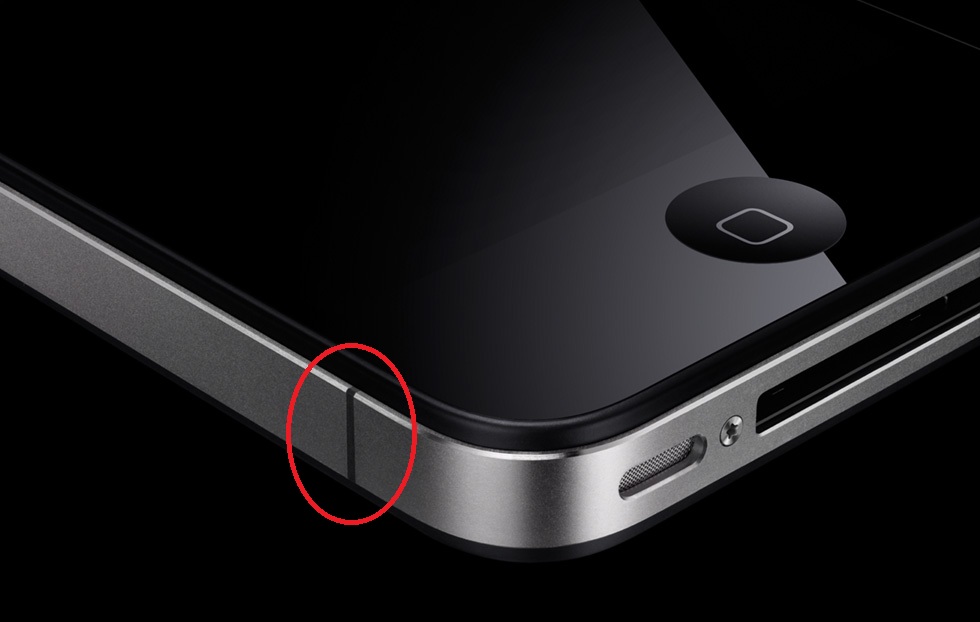

Today Apple held a press conference to address the iPhone 4 antenna problem that’s been making waves in the news recently. Just to recap, the antenna problem occurs when an iPhone 4 user grips the lower left side of the phone. AT&T signal strengh drops from five bars to none at a rapid rate when the user touches and/or grips that specific part of the phone. An official statement from Apple advised users to hold their phones differently or slap on a case. A case would cover the vulnerable lower left side and result in better signal strength during day-to-day use. Today Jobs announced that Apple will begin offering their Bumper case for free for all iPhone 4 owners who purchase their device before September 30. In regards to extending the free case offer Apple says they will evaluate the situation again in late September. If you’ve already purchased a Bumper case, you can receive a full refund on it. Since Apple cannot manufacture enough Bumpers fast enough, they will offer a choice of free cases to choose from (these have not been specified yet). Starting late next week you can apply for a free case at Apple’s online store. And if you’re totally unsatisfied with your purchase you can get a full refund on the phone; Apple’s got a 30 day return policy and a restocking fee will not be applied.
What led Apple to making this decision to offer free cases? Read on to find out.
The decision to offer free cases was a result of 22 days of Apple engineers “working their butts off” to figure out exactly what was going on. After testing several smartphones (including the BlackBerry Bold 9700, HTC Droid Eris, and Samsung Omnia II) Apple concluded that the antenna problem is not unique to the iPhone 4; it exists on many current smartphones. Depending on how you hold a phone, signal strength will attenuate in some way. Jobs admitted that “phones aren’t perfect” and that the antenna problem is “a challenge for the entire industry.” He went on to say that every phone has a weak spot, and Apple’s biggest fault was marking the iPhone 4’s weak spot with a black strip located at the lower left corner of the phone. “X marks the spot” for “incorrect bars” read the slide at the press conference.
In defending the iPhone 4, Jobs listed four factors that prove how insignificant the antenna problem actually is and how much it’s been blown out of proportion. Number one: Smartphones have weak spots. Number 2: AppleCare data. Only 0.55% of all iPhone 4 users have called AppleCare regarding antenna or reception issues. Number 3: AT&T return rates. Jobs compared iPhone 3GS’ 6% return rates to iPhone 4’s 1.7% return rate at AT&T (that’s less than a third of the 3GS returns). Number 4: AT&T call drop rates. Jobs admitted that the iPhone 4 does drop calls at a higher rate than the 3GS. But hard data reveals that the increase is quite insignificant. The iPhone 4 drops less than one additional call per 100 than the 3GS. From this information Jobs gathered what he calls his own “pet theory” as to why ‘Antenngate’ is making s much noise with the latest iPhone. Since the 3GS shared the same design as the 3G, case design had no reason to undergo significant changes. Stores were stocked to the brim with available cases, and Jobs claims that more than 80% of new buyers left the store with a case. iPhone 4’s thinner, squared off design is a major depart from the 3G and 3GS so it will not properly fit old cases. This resulted in only 20% of iPhone 4 customers leaving the store with a case, since only Apple’s Bumpers (which was limited in supply) and a handful of other third-party cases were available at launch. Jobs’ theory holds that since a large number of iPhone 3GS buyers left the store with a case and iPhone 4 buyers did not, 3GS owners were less prone to experiencing signal attenuation than iPhone 4 owners because their antennas were less exposed hiding behind a case.
Apple shared that even though the antenna problem is limited to “a small percentage of users” they “care about every user”. This led to the final decision to offer free cases to all iPhone 4 users. So in the end, the antenna problem is not being pinned as a hardware or software problem, per say. Apple says it’s a fault that most cell phones share and it’s up to phone makers to solve it. Jobs says his engineering team will try their hardest to find a solution first. It’s hard to say how affected iPhone 4 users will respond to Apple’s free case offer. I was hoping for a hardware revision that covered up the exposed corner, but according to Jobs the company is already underway on a better antenna design that doesn’t have this problem. As for a software update fix, that’s not coming either. Yesterday’s 4.0.1 firmware update fixes the faulty algorithm for calculating how many bars to display for a given signal strength. Jobs admitted that the way the iPhone diplayed AT&T signal bars was “off since the beginning” and the new update has resolved that ongoing issue. With everything addressed and out in the open now, are you willing to purchase the iPhone 4 knowing that there is a chance you may be required to hide it’s gorgeous looks inside a case for the best user experience?
Update: Apple put up a “smartphone antenna performance” page on their website that attempts to explain the story behind the problem.
[Via Engadget]
2 thoughts on “Apple’s answer to iPhone 4 deathgrippers: free cases”